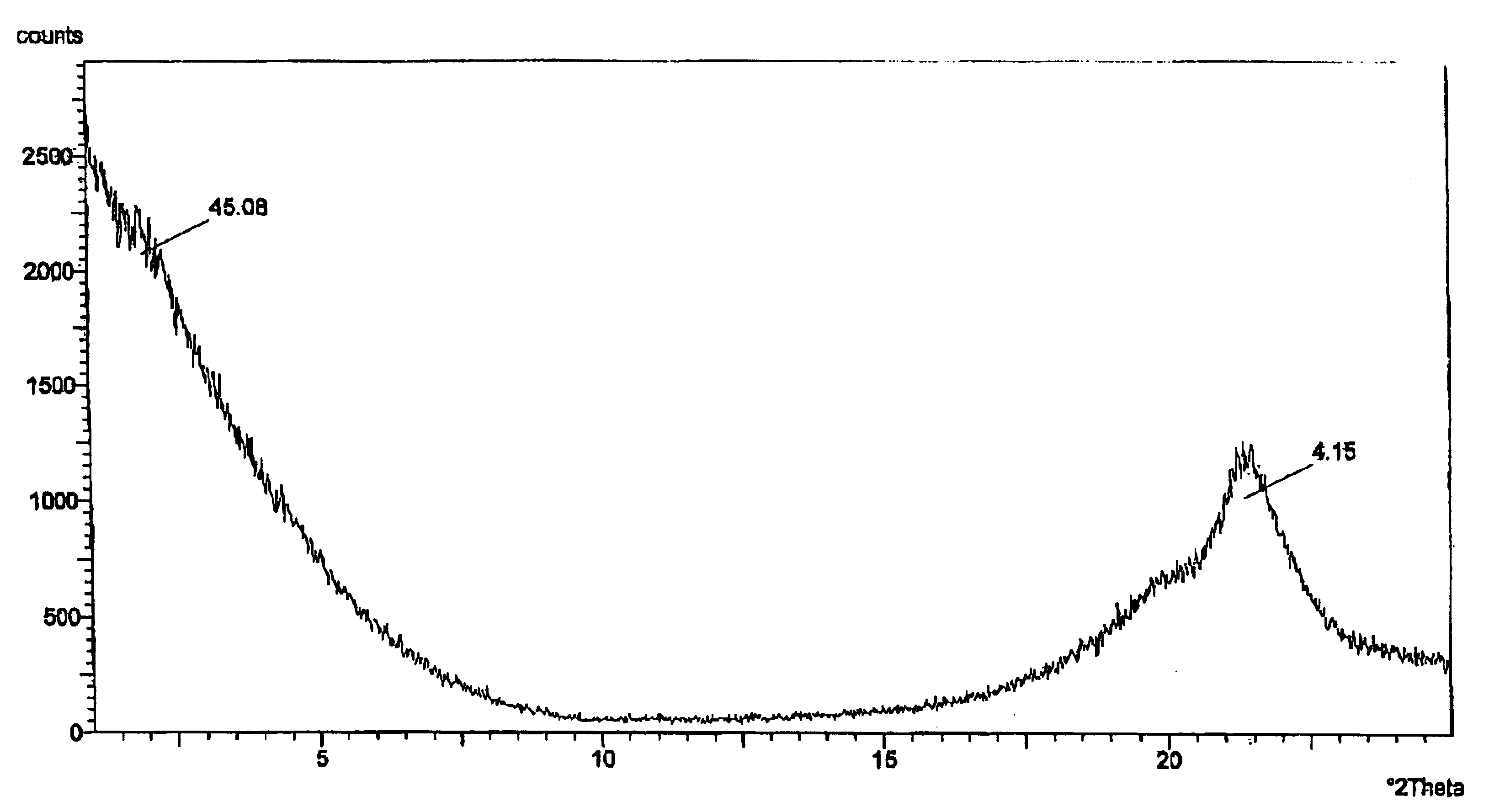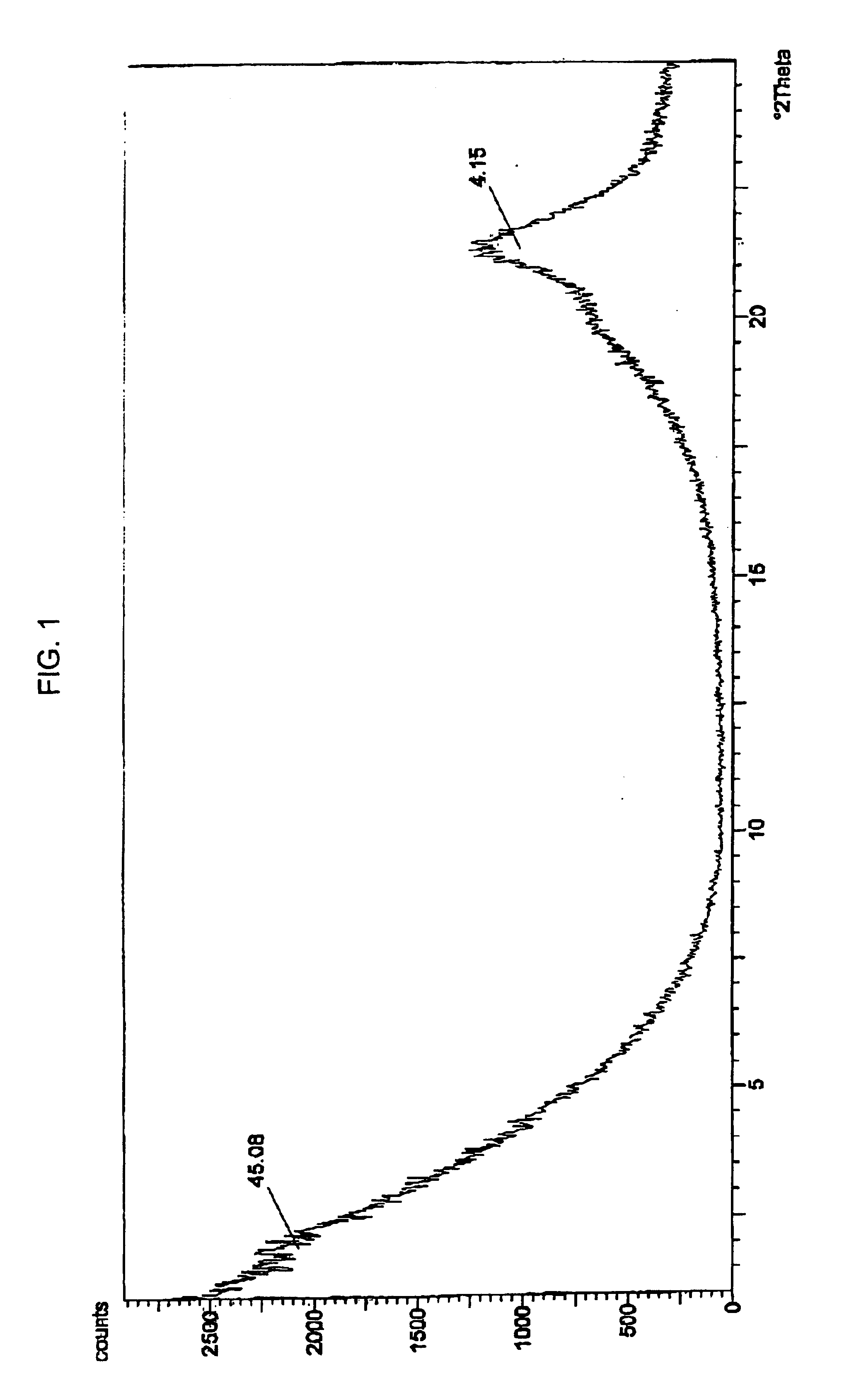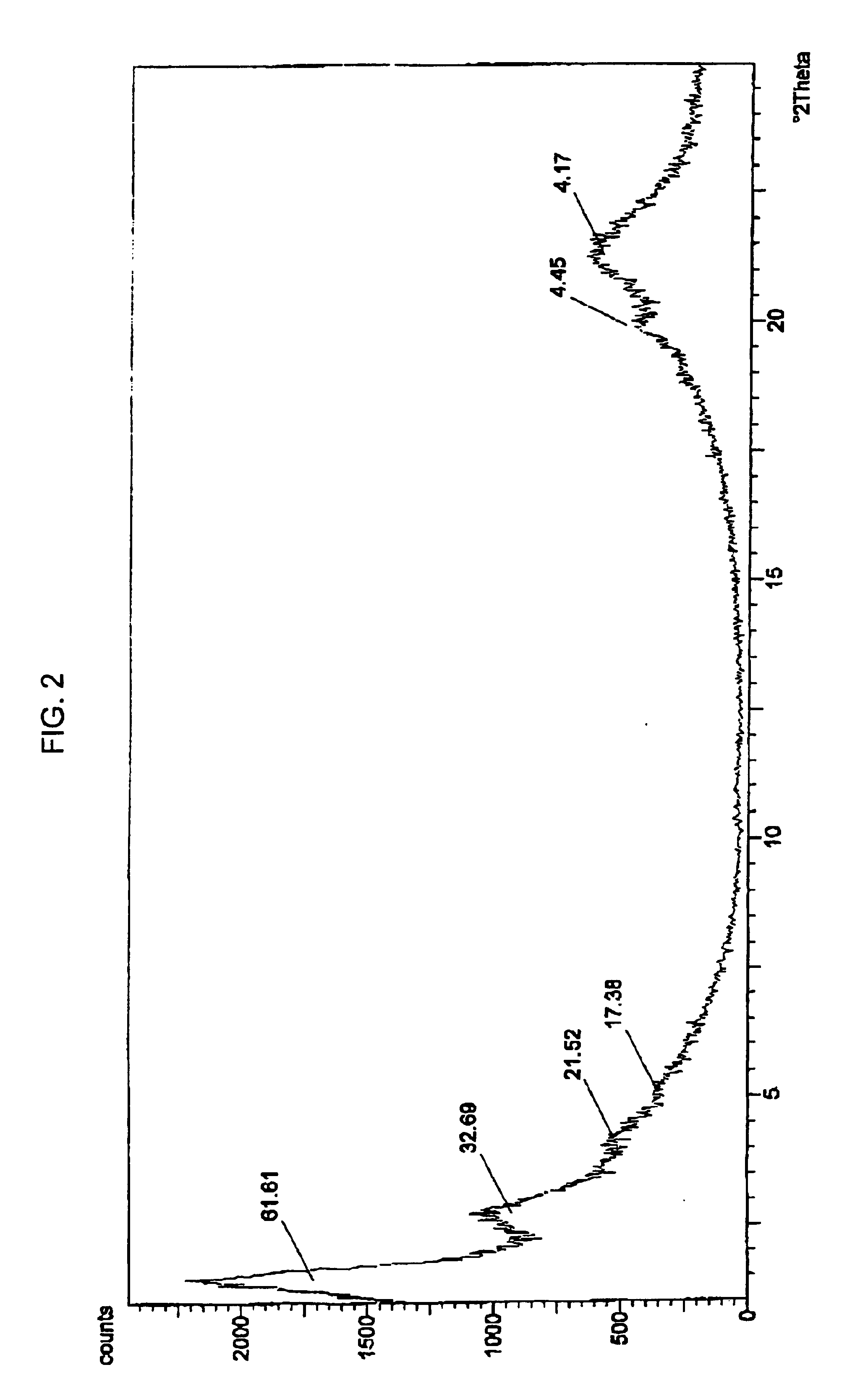Intercalates, exfoliates and concentrates thereof formed with low molecular weight; nylon intercalants polymerized in-situ via ring-opening polymerization
a technology of nanocomposites, which is applied in the field of intercalates, exfoliates and nanocomposite concentrates thereof formed with low molecular weight nylon intercalants polymerized in-situ via ring-opening polymerization, to achieve the effects of improving a number of properties of matrix polymer, reducing the number of polymer particles, and improving the tensile properties of the matrix polymer
- Summary
- Abstract
- Description
- Claims
- Application Information
AI Technical Summary
Benefits of technology
Problems solved by technology
Method used
Image
Examples
example 1
[0058]Formation of PA6 oligomer-terthered layered silicate concentrate: 15 wt % of Onium ion (protonated amino-dodecanoic acid) intercalated-montmorillonite was used as the nanoparticles. 380 grams of organo-montmorillonite (modified by protonated amino-dodecanoic acid chloride) with 2046 grams of caprolactam and 110 grams of amino-caproic acid to catalyze the ring opening of the caprolactam. The mixture was melted at 80-90° C. in an oven and, thereafter, was charged into a reactor having an agitator. The temperature of the reactor was increased to 265° C. The reactor agitator operated at 60 rotations per minute (rpm). The reaction time was 2 hours, and the reactor was purged with argon during the reaction time. The finished mixture was washed with hot water a few times to remove monomer, dimmer and trimer. The finished product was measured by XRD (FIG. 1) to study the layered silicate dispersion; GPC to study the degree of polymerization; and DSC to investigate the polymer crystall...
example 2
[0059]Formation of PA6 oligomer-non-terthered layered silicate concentrate: 15 wt % of Onium ion (protonated octadecyl ammonium)-intercalated montmorillonite was used as the nanoparticles. 380 grams of organo-montmorillonite (modified by protonated octadecyl ammonium) with 2046 grams of caprolactam and 110 grams of amino-caproic acid. The mixture was melted at 80-90° C. in an oven and, thereafter, was charged into a reactor having an agitator. The temperature of the reactor was increased to 265° C. The reactor agitator operated at 60 rotations per minute (rpm). The reaction time was 2 hours, and the reactor was purged with argon during the reaction time. The finished mixture was washed with hot water a few times to remove monomer, dimmer and trimer. The finished product was measured by XRD (FIG. 2) to study the layered silicate dispersion; GPC to study the degree of polymerization; and DSC to investigate the polymer crystallinity.
examples 3 and 4
Preparation and Properties of Nanocomposites Containing the Concentrates Described in Examples 1 and 2:
[0063]The concentrates of Examples 1 and 2 were melt-compounded with Nylon MXD6 (MGC, grade-6121). The weight ratio of the Nylon MXD6 to the concentrate was 80 to 20 for all samples. The processing was conducted in a Leistritz 27 mm twin screw extruder at a processing temperature of 275° C. and a screw speed of 300 rpt. A monolayer film was cast from the compounded pellets formed in the extruder. Films were measured for OTR on Mocon Oxtran 2 / 20 and observed under an optical microscope (×200). The XRD of the finished nanocomposite films are shown in FIG. 3 and FIG. 4, respectively.
PUM
| Property | Measurement | Unit |
|---|---|---|
| weight | aaaaa | aaaaa |
| temperature | aaaaa | aaaaa |
| weight | aaaaa | aaaaa |
Abstract
Description
Claims
Application Information
 Login to View More
Login to View More - R&D
- Intellectual Property
- Life Sciences
- Materials
- Tech Scout
- Unparalleled Data Quality
- Higher Quality Content
- 60% Fewer Hallucinations
Browse by: Latest US Patents, China's latest patents, Technical Efficacy Thesaurus, Application Domain, Technology Topic, Popular Technical Reports.
© 2025 PatSnap. All rights reserved.Legal|Privacy policy|Modern Slavery Act Transparency Statement|Sitemap|About US| Contact US: help@patsnap.com



